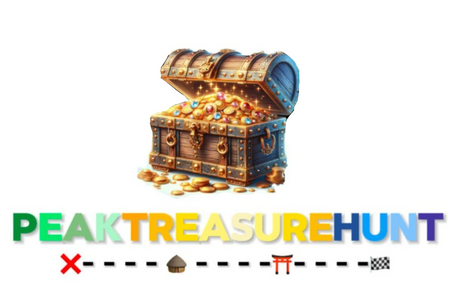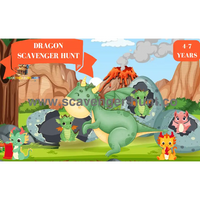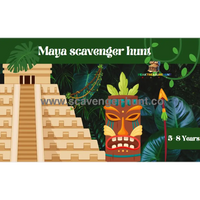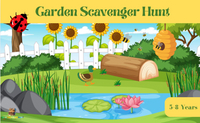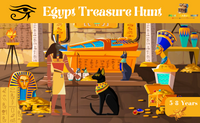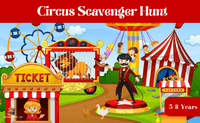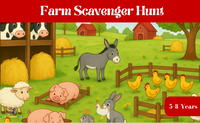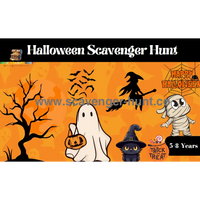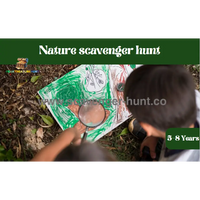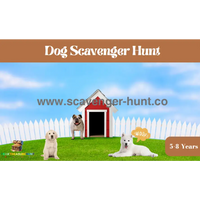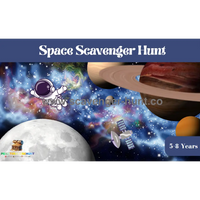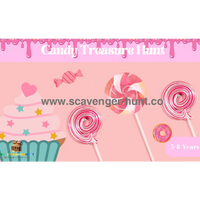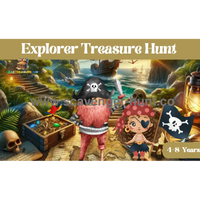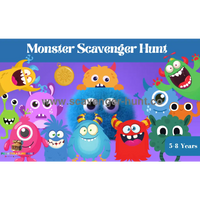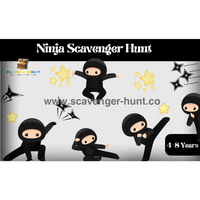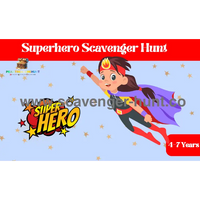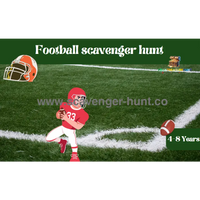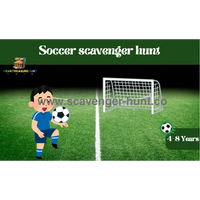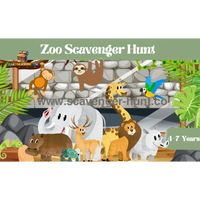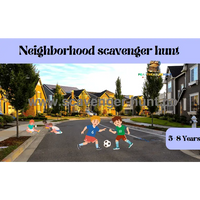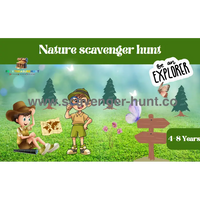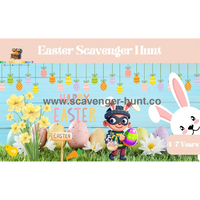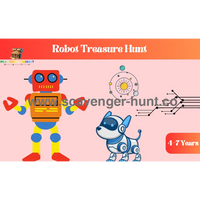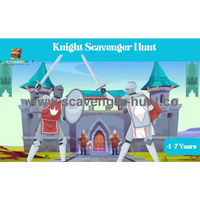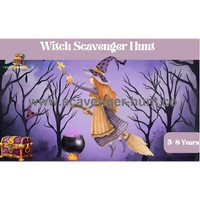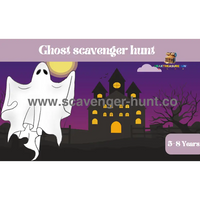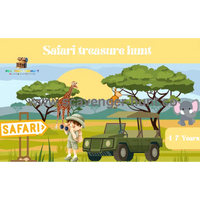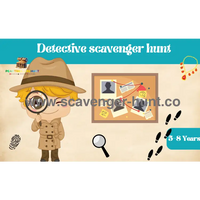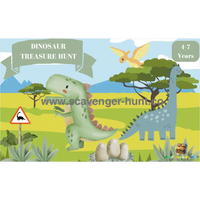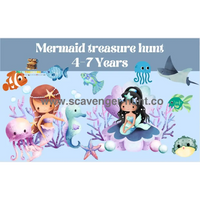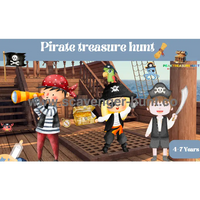Are you looking for a fun, engaging activity that will keep children entertained for hours while encouraging problem-solving, teamwork, and creativity? Look no further than the timeless adventure of a scavenger hunt! Whether you're planning a birthday party, organizing a family gathering, or simply need an exciting rainy-day activity, scavenger hunts offer the perfect solution for creating memorable experiences that children absolutely love.
The best part? You don't need to be a professional party planner or spend hours crafting elaborate puzzles from scratch. With the right template and a little creativity, you can create amazing scavenger hunt adventures right in your own home or backyard.
Why Scavenger Hunts Are Perfect for Children
Scavenger hunts tap into children's natural love of exploration, discovery, and treasure hunting. Unlike passive entertainment, these adventures get kids moving, thinking, and working together toward a common goal. They combine physical activity with mental challenges, making them ideal for children who learn best through hands-on experiences.
From an educational standpoint, scavenger hunts develop critical thinking skills, reading comprehension, and spatial awareness. Children practice following directions, solving problems, and persevering through challenges. The collaborative nature of most hunts also builds teamwork skills and helps shy children come out of their shells in a supportive, fun environment.
Perhaps most importantly, scavenger hunts create genuine excitement and anticipation. The thrill of solving each clue, the satisfaction of finding hidden treasures, and the ultimate reward at the end combine to create an experience that children remember long after the activity is over.
The Essential Elements of a Great Scavenger Hunt
Before diving into templates and specific ideas, it's important to understand what makes a scavenger hunt truly engaging for children. The most successful hunts share several key characteristics that keep participants excited and motivated throughout the adventure.
A compelling storyline transforms a simple treasure hunt into an immersive adventure. Instead of just finding random objects, children become heroes helping to solve mysteries, rescue characters, or complete important missions. This narrative framework gives meaning to each clue and makes the entire experience feel more significant.
Age-appropriate challenges ensure that children feel smart and capable without becoming frustrated. The sweet spot is creating puzzles that make kids think but aren't so difficult that they give up. Consider your audience's reading level, attention span, and problem-solving abilities when crafting clues.
Clear progression from one clue to the next keeps the momentum building. Each solved puzzle should naturally lead to the next location or challenge, creating a sense of forward movement and accomplishment. Avoid dead ends or confusing transitions that might derail the adventure's flow.
A meaningful reward at the end makes all the effort feel worthwhile. This doesn't have to be expensive – often, the satisfaction of completing the challenge combined with a small treat or certificate is enough to make children feel like true champions.
Types of Scavenger Hunts That Work Best
Different styles of scavenger hunts work better for different situations, ages, and spaces. Understanding your options helps you choose the format that will be most successful for your specific circumstances.
Riddle-based hunts use clever wordplay and puzzles to guide participants from location to location. These work particularly well for children who enjoy reading and thinking through problems. Each riddle describes the next location in creative ways, challenging kids to decode the clues and figure out where to go next.
Photo scavenger hunts task participants with finding and photographing specific items rather than collecting physical objects. This format works especially well for older children and eliminates concerns about losing or damaging items. It's also perfect for public spaces where you can't hide physical clues.
Object collection hunts provide lists of items for children to find and gather. These work well for younger children who might struggle with complex riddles but love the satisfaction of checking items off a list. Nature hunts often use this format, encouraging kids to find leaves, rocks, or flowers with specific characteristics.
Themed adventure hunts combine storytelling with puzzle-solving to create immersive experiences. Participants might help pirates find buried treasure, assist detectives in solving mysteries, or aid fairy tale characters in completing quests. These hunts often incorporate costumes, character role-playing, and elaborate storylines.
Creating Your Own Scavenger Hunt: Step-by-Step Guide
Designing a successful scavenger hunt from scratch might seem daunting, but breaking the process into manageable steps makes it much more approachable. Start by considering your space, participants, and available time, then build your adventure around these practical constraints.
Begin by mapping out your available area and identifying good hiding spots or challenge locations. Walk through your space with fresh eyes, looking for interesting nooks, distinctive features, or areas that could become part of your story. Indoor hunts might use different rooms, furniture pieces, or household objects, while outdoor hunts can incorporate trees, garden features, or playground equipment.
Develop your storyline and choose a theme that will resonate with your participants. Popular themes include treasure hunting, mystery solving, fairy tales, superhero adventures, or seasonal celebrations. The theme should influence your language, visual elements, and reward choices.
Create your clues working backward from the final treasure location. Start with where you want the hunt to end, then determine the second-to-last location, and so forth. This approach ensures that your progression makes logical sense and that each clue naturally connects to the next.
Test your hunt before the actual event. Walk through each clue yourself, making sure the difficulty level is appropriate and that the flow works smoothly. Consider asking a friend or family member to try it as well – they might catch issues you missed or suggest improvements.
Free Template Resources and Where to Find Them
While creating your own scavenger hunt can be rewarding, sometimes you need a head start or professional guidance to ensure success. Fortunately, there are excellent resources available to help you create amazing adventures without starting from scratch.
At
www.scavenger-hunt.co, you'll find a comprehensive free scavenger hunt template that takes the guesswork out of planning your adventure. This resource provides the framework, structure, and guidance you need to create engaging hunts tailored to your specific situation and participants.
The template includes sample clues, storyline suggestions, and step-by-step instructions for adapting the content to your space and theme. Whether you're a first-time hunt organizer or an experienced party planner looking for fresh ideas, having a proven template as your starting point can save time while ensuring your event is successful.
Professional templates also include helpful tips for managing groups, adjusting difficulty levels, and troubleshooting common challenges that arise during hunts. This guidance can make the difference between a good adventure and an absolutely unforgettable one.
Adapting Templates for Different Ages and Abilities
One of the biggest advantages of using templates is how easily they can be modified to suit different groups. A well-designed template provides the basic structure while allowing you to adjust complexity, themes, and challenges to match your participants perfectly.
For younger children (ages 4-6), focus on simple visual clues, shorter distances between locations, and immediate rewards. Use pictures instead of written riddles, incorporate familiar objects and locations, and consider having adult helpers stationed at each clue location to provide gentle guidance when needed.
Elementary-age children (ages 7-10) can handle more complex riddles, longer hunts, and multi-step challenges. This age group often enjoys themes related to their current interests – popular movies, books, or TV shows can provide excellent inspiration for storylines and clues.
Older children and tweens (ages 11+) can tackle sophisticated puzzles, coordinate team strategies, and appreciate more elaborate storylines. Consider incorporating technology, such as QR codes or smartphone cameras, to add modern elements that appeal to this age group.
Mixed-age groups require careful balance but can be incredibly rewarding. Pair older children with younger ones, create different roles within the same hunt, or design clues that can be solved at multiple levels of complexity.
Indoor vs. Outdoor Hunt Considerations
The location of your scavenger hunt significantly impacts both the planning process and the participant experience. Each setting offers unique advantages and presents specific challenges to consider.
Indoor hunts provide weather protection, controlled environments, and the ability to use household items as props or hiding places. They're perfect for smaller groups, younger children, or situations where you need to contain the activity within a specific area. However, indoor spaces can feel cramped with larger groups and may limit the physical activity component that many children crave.
Outdoor hunts offer more space, natural hiding spots, and opportunities for physical challenges that get kids moving. They work especially well for larger groups and can incorporate natural elements like trees, rocks, or garden features into the storyline. Weather dependency and safety considerations require more planning, but the payoff is often worth the extra effort.
Hybrid hunts that move between indoor and outdoor spaces can offer the best of both worlds, especially for longer adventures or larger groups. These might start inside with costume preparation and story introduction, move outside for the main hunt, then return inside for final challenges and celebration.
Tips for Success: Making Your Hunt Unforgettable
Even with the best template and careful planning, certain strategies can elevate your scavenger hunt from good to absolutely amazing. These tips come from experienced organizers who have learned what truly makes children's adventures memorable.
Create atmosphere from the moment participants arrive. If you're doing a pirate hunt, greet children at the door dressed as a pirate captain. For mystery themes, set up crime scene tape and investigation tools. The immersive experience begins before the first clue is revealed.
Build in celebration moments throughout the hunt, not just at the end. Cheer when teams solve difficult clues, take photos of exciting discoveries, and acknowledge great teamwork when you see it. These micro-celebrations maintain energy and make everyone feel successful.
Have backup plans ready for common challenges. What happens if a clue gets lost or damaged? How will you handle children who become frustrated or upset? What if weather forces last-minute changes? Thinking through these scenarios ahead of time prevents small problems from derailing the entire adventure.
Consider documentation and keepsakes. Take photos throughout the hunt, create certificates for participants, or design simple treasure maps as take-home souvenirs. These mementos help children remember and share their adventure long after it's over.
Troubleshooting Common Scavenger Hunt Challenges
Even the most carefully planned hunts can encounter unexpected issues. Being prepared for common challenges helps you handle them smoothly without losing momentum or disappointing participants.
If children become stuck on a particular clue, resist the urge to give away the answer immediately. Instead, offer gentle hints that guide them toward the solution. Ask questions like "What do you think this word might mean?" or "Where in the house do we usually find this type of item?" This approach maintains the satisfaction of discovery while preventing frustration.
When team dynamics become unbalanced – perhaps one child is dominating while others feel left out – consider redistributing roles or creating parallel tasks that allow everyone to contribute meaningfully. Some children excel at reading clues aloud, others at spotting hidden objects, and still others at encouraging teammates.
Weather changes can derail outdoor hunts, but having an indoor backup plan keeps the adventure alive. This might mean moving the hunt inside, adjusting clues to work in covered areas, or postponing outdoor elements while maintaining indoor activities.
Lost or damaged clues are bound to happen eventually. Keep backup copies of all clues easily accessible, or better yet, laminate important pieces to make them more durable. Consider having alternative clues ready that lead to the same locations in case originals go missing.
Making It Educational Without Making It Boring
One of the most valuable aspects of scavenger hunts is their potential for incorporating learning in ways that feel completely natural and fun. The key is weaving educational elements seamlessly into the adventure rather than making them feel like obvious lessons.
Math skills can be incorporated through counting challenges, measurement tasks, or pattern recognition. Instead of asking children to "practice addition," challenge them to "find the treasure chest with the number that equals 5+7" or "measure the distance between the oak tree and the garden gate."
Reading comprehension develops naturally as children work together to decode clues and understand instructions. Science concepts can be woven in through nature observations, simple experiments, or challenges that require understanding cause and effect.
History and social studies come alive when hunts incorporate historical themes, cultural elements, or geography challenges. Instead of memorizing facts, children experience history through role-playing and problem-solving within historical contexts.
The Magic of Themed Adventures
While simple treasure hunts can be entertaining, themed adventures create deeper engagement and more memorable experiences. The right theme transforms a basic activity into an immersive story where children become active participants rather than passive followers.
Popular themes that consistently work well include pirates searching for buried treasure, detectives solving mysterious cases, superheroes saving the day, fairy tale characters completing quests, and explorers discovering ancient civilizations. The key is choosing themes that match your participants' interests and current enthusiasms.
Effective themes provide natural language for clues, logical progression for challenges, and meaningful context for rewards. A pirate hunt uses maritime vocabulary and treasure-seeking motivations, while a detective mystery incorporates investigation techniques and evidence gathering.
Don't be afraid to customize themes to match current interests or special occasions. A birthday hunt might center around the birthday child's favorite book character, while a holiday hunt incorporates seasonal elements and traditions.
Building Community Through Shared Adventures
Scavenger hunts create unique opportunities for building connections between children, families, and communities. Unlike many modern entertainment options that isolate individuals, these adventures require communication, cooperation, and shared problem-solving.
Family hunts can bring multiple generations together in ways that feel natural and fun. Grandparents might share their knowledge to solve historical clues, while children contribute energy and modern perspectives. Parents become teammates rather than supervisors, working alongside their children toward common goals.
Community events featuring scavenger hunts help neighbors connect, explore local areas, and create positive shared experiences. Schools, libraries, and community centers often find that hunts attract diverse participants who might not otherwise interact.
The collaborative nature of most hunts means that children learn to appreciate different strengths and perspectives. Quiet children might excel at careful observation, while energetic ones contribute enthusiasm and movement. These experiences build empathy and understanding in natural, pressure-free ways.
Taking Your Hunts to the Next Level
Once you've mastered basic scavenger hunt creation and execution, there are numerous ways to enhance and expand your adventures. Advanced techniques can create even more engaging experiences for repeat participants or special occasions.
Technology integration can add modern elements that appeal to older children. QR codes can replace written clues, requiring participants to scan codes with smartphones or tablets to receive their next challenge. Digital cameras can document discoveries, while GPS devices can guide outdoor adventures.
Multi-stage hunts that span several days or sessions create ongoing anticipation and deeper story development. Each session might reveal new aspects of an overarching mystery or advance participants further along an epic quest.
Collaborative hunts involving multiple families or groups can create community-wide adventures. Different teams might work on parallel quests that eventually converge, or groups might take turns creating hunts for each other.
Seasonal hunt series that evolve throughout the year maintain interest and create traditions that children anticipate. Spring nature hunts might lead to summer adventure themes, fall mystery series, and winter indoor challenges.
The Lasting Impact of Great Adventures
The benefits of well-designed scavenger hunts extend far beyond the immediate fun and excitement. Children who participate in these adventures often develop increased confidence, stronger problem-solving skills, and more positive attitudes toward challenges and teamwork.
The sense of accomplishment that comes from successfully completing a hunt builds self-esteem and encourages children to tackle other difficult tasks with persistence and optimism. The collaborative aspects teach valuable social skills and help children learn to appreciate diverse talents and perspectives.
Many families find that scavenger hunts become cherished traditions that create lasting memories and strengthen family bonds. Children often request "hunt birthdays" year after year, and the shared experiences become stories that families retell and treasure.
Getting Started: Your First Hunt Adventure
Ready to create your own scavenger hunt magic? The most important step is simply beginning. Don't worry about creating the perfect hunt on your first try – focus on having fun and learning what works best for your specific group and situation.
Visit www.scavenger-hunt.co to access the free template that will give you a solid foundation for your first adventure. This resource provides the structure and confidence you need to get started while leaving room for your own creativity and customization.
Remember that the goal is creating joy, connection, and positive memories. Even if every detail doesn't go according to plan, children will remember the effort, excitement, and love that went into creating their special adventure.
Your next great family adventure is just a few clues away. The treasure isn't just at the end of the hunt – it's in the laughter, teamwork, and memories you'll create along the way. Start planning your scavenger hunt today and discover the magic waiting to be uncovered in your own backyard!
